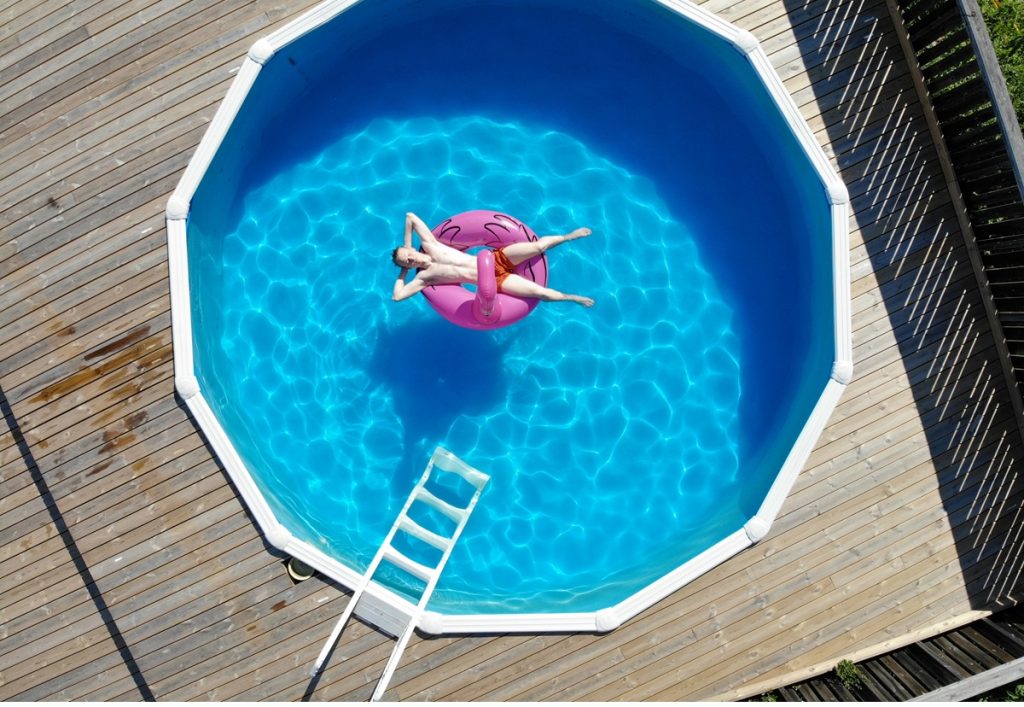Above Ground Pool Liner Talk, Inground Pool Liner Talk, Onground and Semi-Inground Pool Liner Talk, Semi-Inground and Onground Pool Liners - Talk
Is it Time to Replace Your Vinyl Pool Liner? 6 Signs to Watch for This Summer
Summer is here, and with it comes long, sunny days spent by the pool. But while splashing around may be your main priority, it’s the perfect time to pay attention to your pool’s vinyl liner. The heavy use, water chemistry imbalance and exposure to UV rays during the summer months can accelerate wear and tear, leading to issues that are easier (and cheaper!) to fix sooner rather than later.
Your pool’s vinyl liner isn’t just about aesthetics; it plays a crucial role in maintaining the structure and functionality of your pool. Wondering if it’s time for a replacement? Here are six telltale signs to look out for, along with a handy checklist to guide your decision.
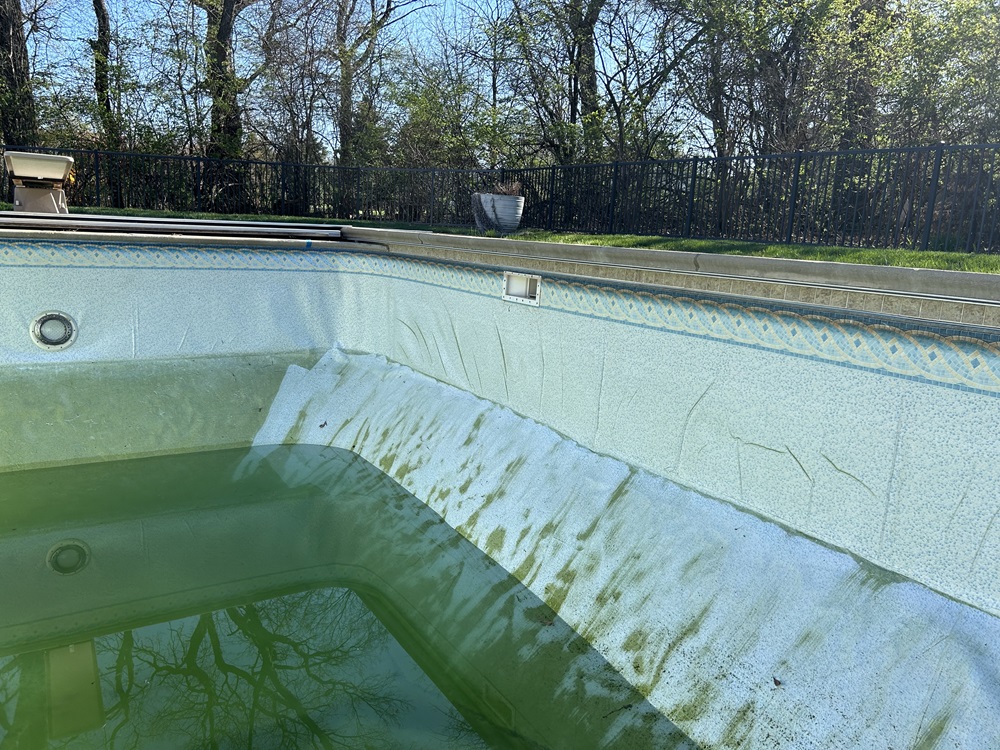
1. Fading Indicates More Than Meets the Eye
Nothing evokes the essence of summer quite like the inviting shimmer of a clear blue pool. However, if your liner is looking dull or lackluster, it might be time to take a closer look. Over time, extended exposure to sunlight, fluctuating temperatures, and pool chemicals can cause the once-vibrant colors of your liner to fade. While this fading might initially seem like just a cosmetic issue, it is often an early indicator of deeper problems. The sun’s powerful UV rays gradually weaken the vinyl’s molecular structure, breaking it down and causing it to become thinner and more brittle.
This deterioration reduces the liner’s flexibility, increasing the chances of cracks, tears, or leaks over time. Additionally, pool chemicals such as chlorine can exacerbate this process by accelerating wear and further compromising the material’s integrity. Addressing these signs early can help prevent costly pool liner repairs – or even pool liner replacement – and ensure your pool stays both beautiful and structurally sound.
Pool Fits Pro Tip: If your once-sapphire liner now resembles a washed-out pastel, it’s not just about looks. It might be time to replace it to ensure your pool stays in top condition.
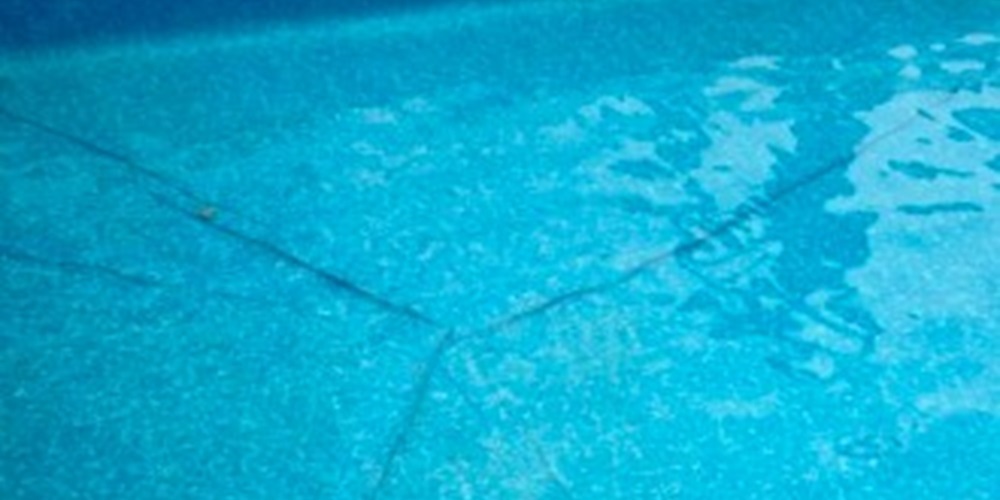
2. Wrinkles Lead to Weak Spots
The appearance of wrinkles in your vinyl pool liner is more than just a cosmetic issue – it’s an early warning sign of potential damage and possible replacement. Wrinkles often develop because of factors such as improper installation, ground shifting beneath the pool, high water table causing the liner to ‘float’ or fluctuations in water chemistry that can cause the liner material to stretch or shrink.
Over time, these creases can do more harm than disrupting the pool’s aesthetic appeal. They create vulnerable areas where the liner material can weaken, increasing the risk of punctures, tears, or leaks. Addressing these wrinkles promptly and assessing the underlying causes can help extend the life of your liner and maintain your pool’s structural integrity.
Pool Fits Pro Tip: Run your hand over the liner. If you feel bumps or folds forming, your vinyl pool liner might be on its last legs and in need of replacement.
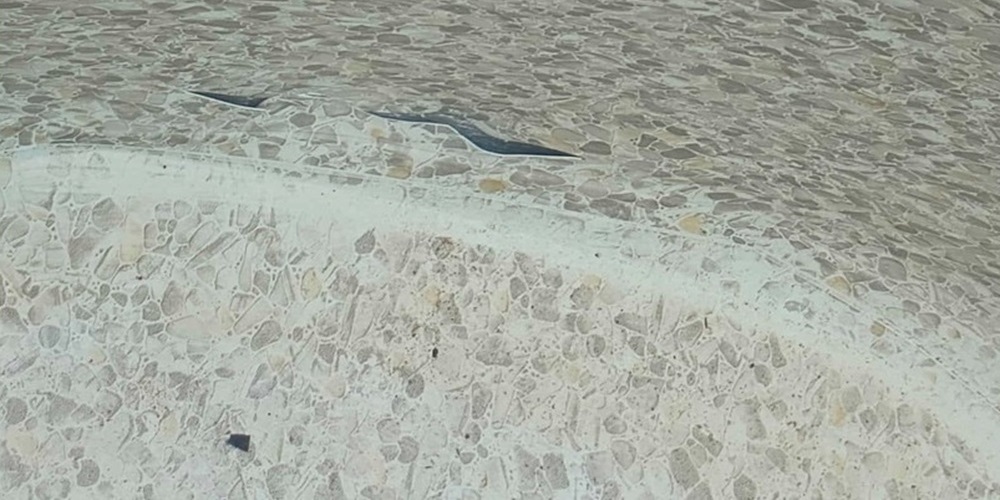
3. Leaks Need Immediate Attention
While a minor leak might seem harmless, even the smallest drip can spell trouble for your pool. Leaks not only waste water but can also erode the soil supporting the pool’s structure, leading to shifts or cracks. As well, the pool water can adversely affect metal pool walls causing them to rust or corrode prematurely.
How can you tell if your liner has a leak?
- Monitor your pool’s water levels regularly and note any unexplained drops, which could indicate a leak. Use a ruler to measure and track changes over a few days for accuracy.
- Inspect the area around your pool for wet or damp spots, particularly near the pool’s edges, as these can be signs of water escaping.
- Look closely at your liner for bubbling or areas that seem to lift off the pool’s base, as this could suggest water is seeping underneath.
Don’t wait: Left unchecked, these leaks can create bigger structural issues that cost much more to fix.
Pool Fits Pro Tip: To pinpoint a hidden leak, try the bucket test. Fill a bucket with water and place it on a pool step, ensuring the water level inside the bucket is the same as the pool water level outside. Mark both levels and leave the bucket in place for 24 hours. If the pool water level drops more than the water inside the bucket, there’s likely a leak that needs attention.
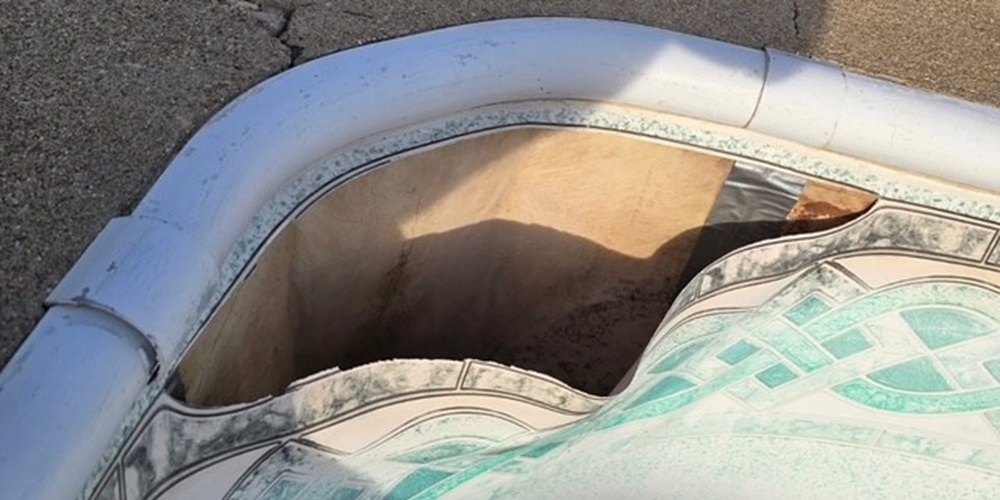
4. Tears Signal Advanced Wear and Deterioration
Tears in your pool liner are often a clear sign of aging and wear, particularly in high-stress areas such as the corners, behind ladders, or along the seams where pressure and friction are more intense. These issues commonly occur because of prolonged exposure to sunlight, fluctuating water chemistry, or simple wear over time. While minor punctures or small tears can usually be addressed with a high-quality repair kit, it’s important to know that such fixes are not always permanent.
If you’re noticing larger, more frequent, or recurring tears, it’s likely an indication that your liner has reached the end of its lifespan. Continuing to patch an overly worn liner can lead to further complications, including leaks or loss of structural integrity. At this point, replacing the vinyl pool liner is often the most effective solution to ensure the pool remains watertight and safe for use.
Pool Fits Pro Tip: If you spot a liner tear, use a vinyl repair patch to prevent further damage, but start planning for a replacement soon.
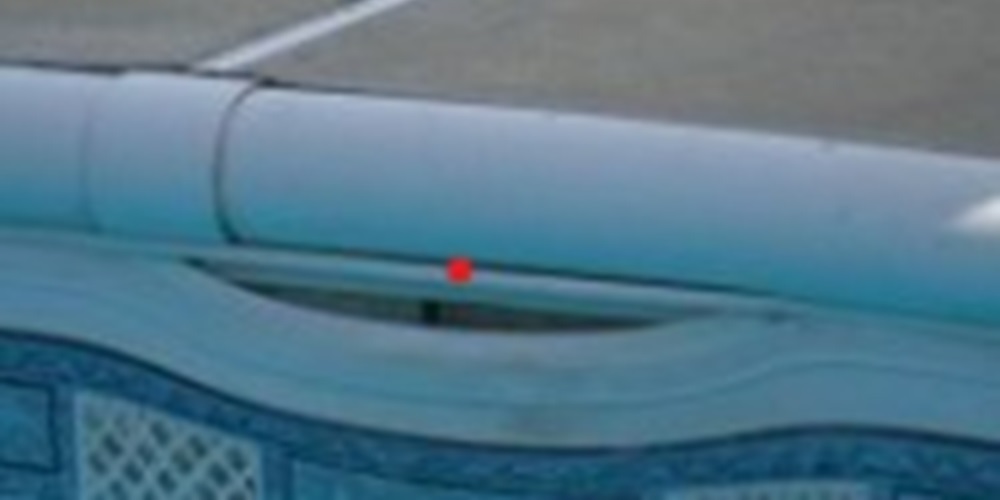
5. Stretching or Liner Coming Out of Coping Track is a Warning Sign
Is your vinyl liner ballooning or sagging out of place? These issues are often clear indicators that your pool liner is under stress and nearing the end of its lifespan. Stretching or sagging typically arises because of prolonged sun exposure, fluctuating water levels, or poor maintenance habits. Constant UV exposure degrades the vinyl material over time, reducing its elasticity and causing it to lose its snug fit.
Additionally, improper water balance – whether too high or too low – can exert uneven pressure on the liner, accelerating wear and tear. When a liner begins to pull away from the pool edges, sag at the bottom, or create visible wrinkles, it not only affects the appearance but also risks compromising the structural integrity of your pool. If your liner bead is coming out of the coping track around the top perimeter edge of the pool, this is also a sign that your liner may be losing its elasticity.
Addressing this issue promptly will help prevent further damage and maintain the safety and functionality of your pool. Consider consulting a professional to assess whether a repair or replacement is the best course of action.
Pool Fits Pro Tip: Regularly inspect your pool liner for early signs of damage, such as minor wrinkles or fading. Addressing small issues promptly can extend the life of your liner and save you from costly repairs or replacements down the line. Additionally, maintaining proper water chemistry helps reduce unnecessary wear on the liner, ensuring it stays in optimal condition for years to come.
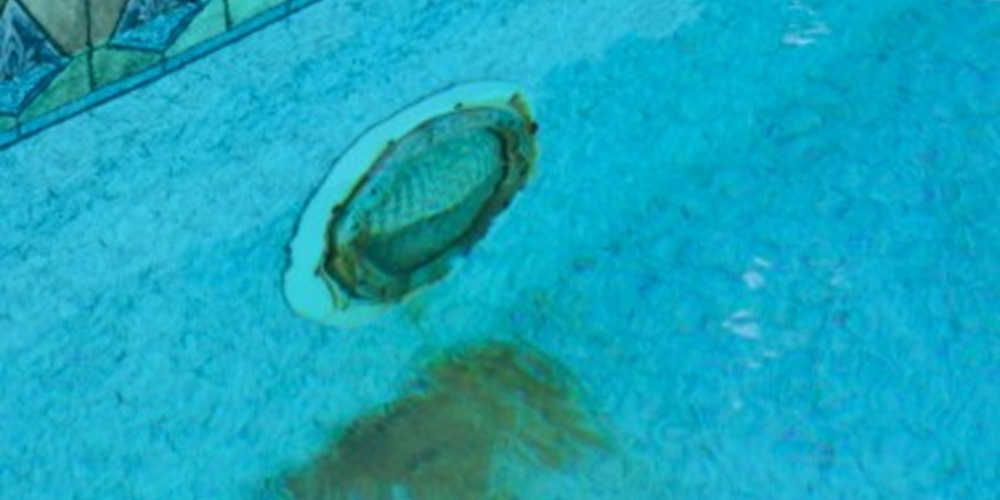
6. Stains Might Be More Serious Than They Appear
Stains on your pool liner can be the result of various factors, including algae, mold, or mineral buildup. While some stains may appear to be purely cosmetic, they could signify more complex underlying issues. For instance, persistent staining might indicate imbalanced water chemistry, such as low pH or high calcium hardness, which can weaken the liner and lead to premature wear. Additionally, stains caused by bacteria or organic matter could point to potential hygiene concerns, as bacterial growth may actively degrade the liner’s material over time.
It’s essential to address stains promptly by testing your water, identifying the source, and applying the appropriate treatments, such as thorough cleaning or chemical balancing. If stains persist or the liner shows signs of further damage, consulting a pool care professional can help ensure both the longevity of your liner and the health of your pool environment.
Pool Fits Pro Tip: Test an inconspicuous area of the stain. If it doesn’t lighten with proper cleaning methods, it may be embedded in the material, signaling the need for a replacement.
Your Easy Checklist for Assessing Your Pool Liner
Not sure whether your liner is due for a makeover? Use this quick checklist to evaluate its condition:
- Does the liner appear faded or dull in color?
- Are there wrinkles or uneven areas in the material?
- Have you noticed any leaks or unexplained water loss?
- Are there visible tears or weak points, especially along the seams or corners?
- Is the liner sagging, stretching, or pulling away from the pool edges?
- Is the liner pulling away from the coping and the liner bead falling out of the coping track around the top perimeter of the pool?
- Are there persistent stains that cleaning won’t remove?
If you check off one or more of these warning signs, it might be time to replace your vinyl pool liner.
Pool Fits Pro Tip: Regular maintenance can extend the life of your pool liner and delay the need for replacement. Always keep your pool water balanced and free of debris, as improper chemical levels and buildup can accelerate wear and tear on the liner. Check for small issues regularly to address them before they become major problems.
How Long Does a Pool Liner Typically Last?
You may be wondering how often you should typically replace your pool liner. It’s a great question and is primarily dependent on how well you take care of your pool and liner and how well you manage your water chemistry.
Inground pool liners typically require replacing every eight to 12 years, but can last upwards of 15 years with exceptional water chemistry and maintenance.
Above-ground pool liners typically have a slightly shorter lifespan and require replacing every six to 10 years but can last upwards of 12 years with exceptional water chemistry and maintenance.
Take Action to Keep Your Pool Sparkling
Your vinyl pool liner works hard to keep your summer swims stress-free, but it won’t last forever. Being proactive about repair or replacement ensures a safer, more enjoyable pool experience for years to come.
When it’s time to replace your liner, rely on the experts at Pool Fits. With years of experience and a wide selection of custom-fit, high-quality liners, Pool Fits makes the process seamless. Plus, free freight on most orders means you save! Need help deciding? Have questions about your pool’s liner? Contact the pros at Pool Fits for expert advice and personalize

